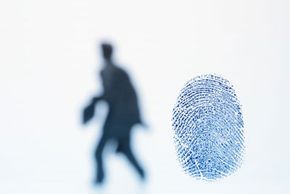Bite-mark Analysis Controversy
In January 2007, prisoner Roy Brown, who had been convicted of murder in New York in 1992, was set free. Brown was one of many prisoners who have been released after DNA analysis, not available or widely used during their trial, cleared them of their crimes. In Brown's case, bite-mark analysis was instrumental in his conviction. But DNA from saliva left on the bite matched with a different suspect. So what went wrong?
The bite mark in the Brown case showed six tooth impressions from the front teeth of the upper jaw, although he was missing two teeth at the time. The expert witness claimed that Brown could have moved the skin of the victim around when biting to make it appear that he wasn't missing any teeth. Although this testimony was not the only evidence used by the prosecution, it was instrumental in helping jurors reach a guilty verdict.
Advertisement
Just five years earlier, an Arizona man named Ray Krone was released from prison after 10 years of serving his murder sentence. The prosecution's witness claimed a perfect match between his teeth and a bite mark found on the victim. The witness stated that "a match is 100 percent" Krone was cleared after DNA belonging to another suspect was found on the victim's clothes.
With wrongful conviction exonerations on the rise, experts began studying the reliability of bite-mark analysis. In 2009, the National Academy of Sciences released a shocking report detailing the numerous problems with various forensic science technologies and techniques, including bite-mark analysis. While stating bite marks can sometimes reliably exclude suspects, the report noted no scientific studies supported the assertion that bite marks provide sufficient detail for positive identification.
Several years later, Drs. Iain Pretty and Adam Freeman of the American Board of Forensic Odontology (ABFO) conducted a study among ABFO-certified dentists concerning bite-mark analysis. An overwhelming number of participants couldn't even agree on whether they were looking at an actual bite mark. Freeman subsequently stopped practicing bite-mark analysis.
More recently, after the Texas Court of Appeals released Steven Chaney — a man wrongfully convicted for murder based on bite-mark evidence — the Texas Forensic Science Commission in 2016 called for an end to the practice.
Today, some critics feel that bite-mark analysis should be used only to eliminate, not to identify, a suspect. Others say that it's acceptable to state there is a probability that a suspect created the mark, but that it's important to clarify that bite marks can't be the only thing linking the suspect to the crime. Forensic dentist training as well as proper education of the jury are also factors.
For lots more information about forensic dentistry and crime stuff, check out the articles and links below.
Related Articles
More Great Links
Sources
- Bowers, C. Michael. "Forensic Dental Evidence: An Investigator's Handbook." Elsevier Academic Press, 2004.
- Evans, Collin. "Murder 2: The Second Casebook of Forensic Detection." John Wiley & Sons, 2004.
- Fabricant, Chris and Delger, Dana. "Remembering Exoneree Steven Mark Chaney." June 1, 2021 (Jan. 18, 2022) https://innocenceproject.org/remembering-exoneree-steven-mark-chaney/
- Genge, N.E. "The Forensic Casebook: The Science of Crime Scene Investigation." Ballantine Books, 2002.
- James, Stewart H., et al. "Principles of Bloodstain Pattern Analysis: Theory and Practice." CRC Press, 2005.
- Kimura, Ryosuke and Yamaguchi, Tetsutaro, et al. "A Common Variation in EDAR Is a Genetic Determinant of Shovel-Shaped Incisors." (Jan. 18, 2022) https://www.ncbi.nlm.nih.gov/pmc/articles/PMC2756549/
- LeCroy Dental. "Dental Numbering Systems." August 3, 2017 (Jan. 18, 2022) https://lecroydental.com/dental-numbering-systems/
- NHS. "Teeth facts and figures." (Jan. 18, 2022) https://www.nhs.uk/live-well/healthy-body/teeth-facts-and-figures/
- Nickell, Joe and John F. Fischer. "Crime Science: Methods of Forensic Detection." University Press of Kentucky, 1999.
- Ramsland, Katherine. "The Forensic Science of C.S.I." Berkeley Boulevard, 2001.
- Randerson, James. "Bite-mark evidence can leave false impression." New Scientist, March 15, 2004. http://www.newscientist.com/article/dn4758-bitemark-evidence-can-leave-false-impression.html
- Santos, Fernanda. "Evidence From Bite Marks, It Turns Out, Is Not So Elementary." New York Times, January 28, 2007. http://www.nytimes.com/2007/01/28/weekinreview/28santos.html
- Selby, Daniele. "Why Bite Mark Evidence Should Never Be Used in Criminal Trials." Innocence Project. April 26, 2020. (Jan. 18, 2022) https://innocenceproject.org/what-is-bite-mark-evidence-forensic-science/
- "Strengthening Forensic Science in the United States: A Path Forward." National Academies of Sciences. 2009. (Jan. 18, 2022) https://www.ojp.gov/pdffiles1/nij/grants/228091.pdf
- The Petri Dish. "What piece of crime scene evidence is responsible for identifying over 93 per cent of human remains?" Oct. 13, 2020 (Jan. 18, 2020) https://thepetridish.my/2020/10/13/what-piece-of-crime-scene-evidence-is-responsible-for-identifying-over-93-per-cent-of-human-remains/
- University of Maryland School of Dentistry. "Early Forensic Odontology." (Jan. 18, 2022) https://www.dental.umaryland.edu/museum/exhibits/online-exhibits/forensic-odontology/early-forensic-odontology/
- Whitaker, D.K. and D.G. MacDonald. "A Colour Atlas of Forensic Dentistry." Wolfe Medical Publications Ltd, 1989.
